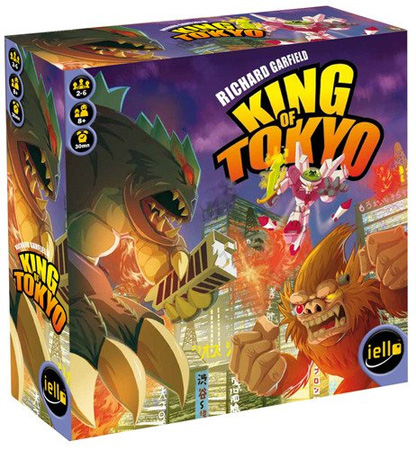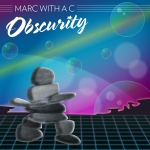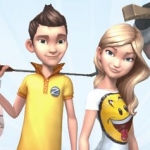
Back in July I had the opportunity to immerse myself in a full weekend of nonstop tabletop gaming at the first annual Dice Tower Con in Kissimmee, Florida. I’m a huge fan of board and card gaming, but I don’t currently have a game group of my own, so it was great to have a chance to meet and play with a whole bunch of folks who were just as jazzed about gaming as I am. Throughout the weekend I played several old favorites, but the real highlight of the convention for me was getting the chance to try out and learn some new games I’d never seen before. Chief among those was King of Tokyo.
Released in 2011 by Iello Games, King of Tokyo is a giant monster game created by Richard Garfield. He is the big brain behind this game, and he previously created a little card game you might know about called Magic: The Gathering. While Magic is a pretty complex game that has a potentially steep learning curve and can be tough for first timers to jump on board, King of Tokyo plays very simply and is quick to pick up. You’ll pick a monster at the start of the game, and you’ll try to destroy all your opponents’ monsters. Alternately, you can win relatively peacefully if you stay alive long enough to be the first player to accumulate twenty victory points.
The core mechanic is Yahtzee-esque dice rolling that will let you strategically attack your opponents, heal yourself, and earn victory points. You also can earn energy, which serves as a resource that you can spend to buy cards from a randomized in-game store. The cards will provide you with special abilities (such as “Extra Head,” which allows you to roll an additional die each time you roll), alternate rule modifiers (like “Poison Quills,” which lets you attack another monster whenever you roll triple 2’s on the dice), and devastating one-time events (like “Gas Refinery,” which gives you two victory points and deals three points of damage to all your enemies).
With its clever art style, fun gameplay, and deceptively addictive levels of strategy, King of Tokyo is a great game that can be played in less than an hour. The game is designed for two to six players, but I’ve found it works best with at least three people playing. Iello suggests the game for ages eight and above, and it should be just as much fun for parents to play with their kids as for friends (or even strangers, in the case of my convention visit) to play with each other. It’s hard to convey all the nuances of the game in text, so I put together a video to show you the game’s components, as well as a few sample turns of gameplay:
I heartily recommend King of Tokyo as one of the very best tabletop games released in the past couple of years. Pick it up, select a favorite monster, and thank me later.






